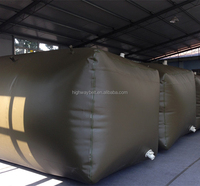Popular in your industry












































































Related Searches:
























































































































































Top categories
About rubber water storage tanks
In an era where water conservation and management are paramount, innovative solutions are not just a luxury but a necessity. Enter the world of rubber water storage solutions – a game-changer in the realm of water conservation. These tanks, often repurposed from durable tire materials, offer a versatile and eco-friendly alternative to traditional water storage methods. From withstanding harsh climates to accommodating the needs of thirsty livestock, rubber water storage tanks have proven their mettle. This article delves into the myriad of advantages these tanks provide, exploring their applications across industries, and guiding you through the selection process on platforms like Alibaba.com to find the perfect fit for your water storage needs.
Understanding Rubber Water Storage Solutions

Rubber water storage tanks, often crafted from repurposed tires, present a durable and versatile solution for water and feed storage. These tanks are created by cutting the tires into halves, yielding two 'donuts' that serve as the container. The circular shape of the tire is maintained, and the 'donut hole' is typically filled with materials like concrete to create a deep trough. This method is favored for its simplicity and the robustness of the resulting tank.
In colder climates, such as Montana, these tanks are equipped with continuous water flow systems and drain fields to prevent freezing and moss growth. The adaptability of these tanks is further demonstrated by their use in various temperatures, from the cold winters of Kentucky to the extreme heat of New Mexico. The installation process involves setting the tire with plumbing in place, then filling the center with a concrete mixture, ensuring it is well-tamped under the lip for stability.
Maintenance of these tanks is straightforward, requiring only occasional scrubbing to remove algae in warmer climates. Some users have innovated with heat shrink wrapping for additional strength. Despite concerns about potential toxins in the rubber, many have successfully used these tanks for livestock without issue. When leaks occur, they are often addressed by sealing the interface between the rubber and concrete or using bentonite as a sealant, showcasing the tanks' ease of repair.
Types of Rubber Water Storage Tanks on Alibaba.com

Alibaba.com showcases a diverse range of rubber water storage tanks designed to cater to various storage requirements. Among the options available, PVC folding water storage pillow tanks are prominent for their collapsible design, making them suitable for agricultural irrigation and areas prone to drought. These tanks are valued for their portability and ease of deployment in the field.
GRP (Glass Reinforced Plastic) water tanks, including those with capacities of 300 liters, are also featured, offering a robust and durable solution for water storage. FRP (Fiber Reinforced Plastic) GRP tanks are highlighted for their fire resistance and large capacity options, such as 200,000 to 5,000-liter gallon tanks, suitable for industrial and fire protection use.
For rainwater collection, manufacturer-direct FRP GRP tanks provide an economical option, while modular sectional elevated steel tower water tanks offer a high-capacity solution, with some models holding up to 100,000 liters. These tanks are often galvanized for corrosion resistance and are designed for long-term water storage.
Flexible solutions like inflatable rubber water tanks, with capacities like 15,000 liters, cater to temporary and field applications, including irrigation. Polyethylene tanks, with features such as drain ports, offer a versatile and chemical-resistant option for water storage, available in vertical configurations.
The range extends to specialized tanks such as anti-corrosion fiberglass water storage tanks suitable for storing more aggressive liquids like HCL. The variety of tanks on Alibaba.com serves multiple industries, from agricultural to industrial, highlighting the adaptability and functionality of rubber water storage solutions.
Key Features of Rubber Water Storage Solutions
Rubber water tanks, crafted from repurposed tires, offer a robust alternative to traditional water storage options. These tanks are recognized for their exceptional durability, having served industries such as dairies and feedlots for decades. Their resilience is evident as they resist freezing and corrosion, and remain unaffected by livestock or machinery impacts. Unlike other materials, rubber tanks can sustain the force of cattle without sustaining damage, and their design allows multiple animals to drink simultaneously, enhancing their practicality in agricultural settings.
The construction of these tanks takes advantage of the inherent strength of tire sidewalls, which forms the base of the tank. While the tanks may incorporate tires that are not flawless, minor imperfections can be effectively repaired, ensuring a long-lasting water storage solution. The adaptability and longevity of rubber water tanks have made them a preferred choice in various agricultural and industrial applications, underscoring their growing dominance in the market.
Advantages of Using Rubber Water Storage

Rubber water tanks, crafted from repurposed tires, offer a robust alternative to traditional water storage options. These tanks boast exceptional durability, having served in various settings such as dairies, feedlots, and open ranges for decades. Their resilience is evident as they resist freezing, corrosion, and damage from livestock or machinery interactions. The unique construction of rubber water tanks allows them to withstand significant pressure, including the jostling from cattle, without sustaining damage. This durability is not just a claim; it's backed by their long-standing presence in the industry.
The design of these tanks accommodates multiple animals drinking simultaneously, which is particularly beneficial in dairy operations where cows often come off the milkers thirsty. Unlike smaller ball-waterers, rubber water tanks provide ample space for a herd to hydrate without waiting turns. Moreover, their resistance to impacts, even from heavy equipment like skid-steers, is a testament to their robustness. While imperfections such as cuts and gashes might be present, they do not compromise the functionality of the tanks, as minor damages can be easily repaired. The longevity and low maintenance of rubber water tanks make them a sustainable choice for efficient water management in agricultural and industrial applications.
Applications in Various Industries
Rubber water tanks, crafted from repurposed tires, have become a robust solution for water storage needs in various industries. Their resilience is evident in their widespread use in settings such as dairies, feedlots, and open ranges. These tanks accommodate the demanding pressures of livestock crowding, making them suitable for agricultural environments where cattle and other animals require reliable access to water. The volume of these tanks is sufficient to serve multiple animals simultaneously, which is particularly beneficial after milking sessions when the need for water is immediate and collective. Beyond agriculture, the durability of rubber water tanks suggests potential applications in other sectors that require sturdy, long-lasting water storage options.
Installation and Maintenance Best Practices
For a successful water tank installation, selecting the right tank is crucial. Consider the volume of water you need to store and the budget you have in mind. While various materials are available, rubber water storage tanks are a durable option. Once you've chosen your tank, finding an appropriate location is the next step. The base is vital for longevity and stability, so ensure it's strong and can protect the tank from bacteria and erosion. When installing, follow the manufacturer's instructions carefully to avoid leaks, especially when making inlet and outlet connections.
After setting up the base and tank location, connect the tank to your main water supply. If your system requires it, install a pump to facilitate water movement. It's important to fit any necessary accessories, like valves or gauges, to monitor the tank's performance. Post-installation, regular maintenance is key to ensure efficiency. This includes inspecting for leaks or damage, cleaning to prevent silt and algae buildup, and maintaining pumps or machinery for optimal operation. Proper maintenance not only extends the life of the tank but also ensures a consistent water supply.
Sustainability and Environmental Impact
Rainwater collection stands out as a prime example of an environmentally friendly water storage method. This approach aligns with sustainable practices by capturing and reusing rainwater, which conserves our finite water resources. Utilizing rainwater can contribute to reducing the demand on conventional water supplies and help maintain reserves for future needs.
The practice of harvesting rainwater not only supports individual and community efforts in water conservation but also offers broader ecological benefits. By integrating rainwater collection systems, such as rubber water storage tanks, one can effectively manage stormwater, reduce runoff, and mitigate the impact on local waterways. This proactive measure can also play a role in earning environmental certifications and supports efforts in preserving water for periods of drought or in response to water use restrictions.
Rubber water storage tanks, when used for rainwater harvesting, provide a resilient and flexible solution that can be adapted to various settings, from residential gardens to larger scale industrial applications. Their use in systems for irrigation, toilet flushing, and other non-potable water needs demonstrates a commitment to sustainable water management practices.
Choosing the Right Rubber Water Storage Solution on Alibaba.com
Selecting the appropriate rubber water storage tank on Alibaba.com involves considering various factors to ensure it meets specific requirements. Rubber water storage tanks, such as the PVC folding water storage pillow tanks, are designed for agricultural irrigation and are collapsible, offering drought resistance. The GRP water tanks, available in different capacities, cater to both small-scale and large-scale storage needs, with some models specifically designed for fire water storage, indicating their durability and safety features.
For those requiring tanks with anti-corrosion properties, fiberglass options like the FRP GRP water storage tanks are suitable, especially for storing more aggressive liquids like HCL. The versatility of these tanks is evident as they come in various configurations, including elevated tanks for rainwater collection, vertical polyethylene tanks with convenient drain ports, and flexible options such as the portable inflatable tarpaulin tanks for industrial use.
When choosing a tank, it's important to consider the material's compatibility with the stored liquid, the tank's capacity, and the specific features like UV resistance or collapsibility for ease of transport and storage. Alibaba.com's range includes tanks that are modular and can be easily assembled, as well as those made from materials like PE, suitable for underground installation. By assessing the intended application and installation environment, buyers can find a rubber water storage solution that provides reliability and performance.
Conclusion
Rubber water storage solutions stand out as a testament to innovation in environmental sustainability. These tanks, crafted from repurposed tires, not only offer a durable and cost-effective option for water management but also contribute to ecological conservation efforts. Their ability to withstand extreme conditions, resist damage from livestock and machinery, and provide ample water supply for various needs underscores their practicality. The ease of installation and low maintenance further enhance their appeal. As we have seen, Alibaba.com presents a diverse array of rubber water storage tanks, ensuring that there is a solution for every requirement, be it agricultural irrigation or industrial use. By choosing these eco-friendly tanks, users not only optimize their water management strategies but also take a step towards a more sustainable future. Embracing rubber water storage solutions is more than a smart choice; it's a stride towards preserving our planet's most precious resource.


































